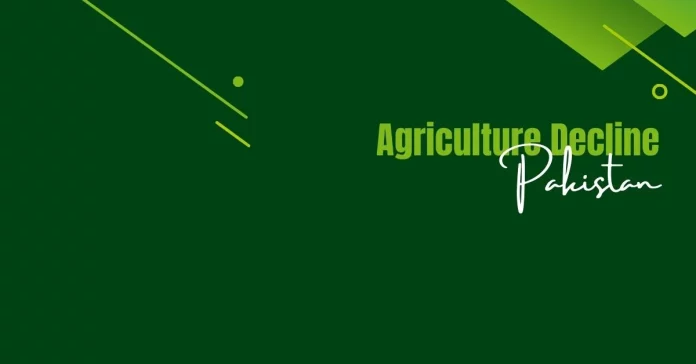Introduction to the Agriculture System of Pakistan
Pakistan is an agricultural country and has the largest irrigation system in the world. The agriculture sector is the backbone of the economy, as it contributes 19.8% to the country’s GDP and provides employment opportunities to 42.3% of the labor force.
Pakistan, with its fertile land and extensive irrigation system, was once known as the breadbasket of the subcontinent. However, in recent years, the country has become heavily reliant on food imports, which has raised concerns about its food security.
Historical Overview of Agriculture in Pakistan
Pakistan has a long history of agriculture that dates back to the Indus Valley Civilization. The fertile plains of the Indus and its tributaries have provided the basis for sustained agricultural activity. During the British colonial rule, Pakistan’s agricultural economy was integrated into the global system of trade, and it became a major supplier of wheat and cotton to Britain.
The Largest Irrigation System in the World
Pakistan has the largest irrigation system in the world, consisting of large dams, barrages, and canals. This system provides water for the cultivation of crops in the arid regions of the country. However, this system has been plagued by mismanagement, corruption, and lack of maintenance, which has led to a decline in the productivity of the agricultural sector.
The Causes of the Decline in Agriculture
Several factors have contributed to the decline in agriculture in Pakistan. One of the primary reasons is the lack of investment in the sector. The government has failed to provide adequate funding for research, technology, and infrastructure, which has resulted in low productivity and yield.
Increasing Population Pressure
Another major factor is the increasing population pressure, which has led to the fragmentation of land and overuse of natural resources. This has resulted in soil degradation, water depletion, and loss of biodiversity. The absence of land reforms has also prevented small farmers from accessing credit, inputs, and markets, which has perpetuated poverty and inequality.
Mismanagement of water resources
One of the major causes of this decline is the mismanagement of water resources. Pakistan’s irrigation system is inefficient, and water is wasted due to outdated irrigation methods, inadequate water storage facilities, and lack of maintenance. This results in water scarcity during the critical crop growth stages, leading to crop failures and reduced yields.
lack of Modern Farming Techniques and Equipment
Another factor contributing to the agriculture decline in Pakistan is the lack of modern farming techniques and equipment. The majority of the farmers in Pakistan use traditional farming methods that are not suitable for modern-day agriculture. They lack access to modern equipment, fertilizers, and pesticides, resulting in lower yields and poor crop quality. The government should promote modern farming techniques and provide subsidies to farmers to encourage them to adopt new methods.
Climate change
Climate change is another significant challenge faced by the agriculture sector in Pakistan. The country is experiencing more frequent and intense weather events, such as floods, droughts, and heatwaves, which are negatively impacting crop yields. In addition, the country’s soils are also becoming degraded due to overuse, poor irrigation practices, and lack of nutrient management. This further reduces the productivity of crops, making them more vulnerable to pests and diseases.
The Consequences of Agriculture Decline
The decline in agriculture has had several consequences for Pakistan. One of the most significant consequences is the food insecurity, as the country has become heavily dependent on food imports. This has made Pakistan vulnerable to price shocks, supply disruptions, and geopolitical risks.
Pressure on Pakistan’s Foreign Reserves
when country imports food commodities, which puts pressure on its foreign reserves and negatively impacts its trade balance. This also increases the prices of food commodities in the country, making them unaffordable for the poor. Moreover, the decline in agriculture productivity has also led to rural poverty, as farmers are unable to earn enough income to sustain their families.
loss of livelihoods for Millions of farmers
Another consequence is the loss of livelihoods for millions of farmers and rural communities, who depend on agriculture for their subsistence. This has led to rural-urban migration, social unrest, and political instability. The decline in agriculture has also had environmental consequences, such as deforestation, water pollution, and greenhouse gas emissions.
Conclusion:
The decline in agriculture productivity in Pakistan is a complex issue, and multiple factors are contributing to it. Mismanagement of water resources, lack of modern farming techniques and equipment, climate change, and soil degradation are the main causes of this decline. To address this issue, the government needs to take steps to promote modern farming techniques, provide subsidies to farmers, and invest in water storage facilities and irrigation infrastructure. By doing so, Pakistan can increase its agriculture productivity and become self-sufficient in food production.
















